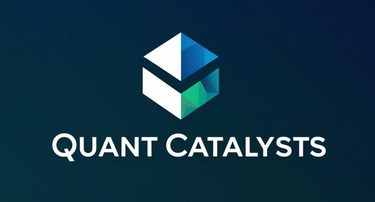Decoding Market Dynamics: How AI is Revolutionizing Financial Simulations
Financial markets are notoriously complex, influenced by a myriad of factors that make them difficult to predict and model. Traditional methods often fall short of capturing the nuanced, real-time interactions that drive market behavior. However, recent advancements in artificial intelligence, particularly through a novel approach called TRADES, are beginning to change the game. TRADES, or TRansformer-based Autoencoder for Denoising market Engineering, offers a new way to simulate market dynamics with unprecedented realism and responsiveness.
Shreyash Nadage, FRM® CQF®
2/20/20253 min read


Decoding Market Dynamics: How AI is Revolutionizing Financial Simulations
Financial markets are notoriously complex, influenced by a myriad of factors that make them difficult to predict and model. Traditional methods often fall short of capturing the nuanced, real-time interactions that drive market behavior. However, recent advancements in artificial intelligence, particularly through a novel approach called TRADES, are beginning to change the game. TRADES, or TRansformer-based Autoencoder for Denoising market Engineering, offers a new way to simulate market dynamics with unprecedented realism and responsiveness.
The Challenge of Market Simulation
Before diving into TRADES, it's important to understand why market simulation is so crucial. Realistic simulations enable:
Calibration and Evaluation of Trading Strategies: Testing algorithmic trading strategies in a simulated environment before deploying them in the real world.
Counterfactual Experiments: Analyzing the impact of large orders or changes in regulations without risking actual market disruption.
Granular Market Data Generation: Creating synthetic data sets to facilitate research and collaboration.
The key to a useful market simulation lies in its realism, which is how closely the simulation mirrors real-world market behavior, and its responsiveness, or how the simulated market reacts to actions taken by experimental agents.
Enter TRADES: A New Approach
TRADES addresses the limitations of previous market simulation techniques by using a cutting-edge combination of diffusion models and transformer networks. Let's break down what that means in plain terms.
Diffusion Models: Turning Noise into Insight
Imagine taking a clear image and gradually adding noise until it becomes pure static. That's the forward diffusion process. A diffusion model then learns to reverse this process, starting from the static and gradually removing the noise to reconstruct the original image.
In the context of market simulation, TRADES applies this concept to financial data. The model takes real market data, adds noise to create a "noisy" version, and then learns to "denoise" it back to a realistic market state. By learning this denoising process, TRADES can generate new, realistic market simulations.
Transformers: Mastering Market Relationships
Transformers are a type of neural network architecture that excels at understanding relationships within sequential data. In simpler terms, transformers can analyze a series of data points and identify patterns and dependencies that might be missed by other methods.
In TRADES, transformers analyze the Limit Order Book (LOB), a record of all outstanding buy and sell orders for an asset. By understanding the relationships between these orders, transformers can predict how the market will react to new orders and generate realistic order flows.
Key Components of TRADES
Multivariate Time Series Generation: TRADES generates market order streams as a multivariate time series, meaning it considers multiple features (price, quantity, order type, etc.) over time to produce realistic simulations.
Limit Order Book (LOB): TRADES uses LOB data, which contains information about buy and sell orders at different price levels, to simulate market dynamics. The LOB is updated with each event, such as order placement, modification, cancellation, and execution.
Conditioning: TRADES generates new orders based on the current market state, considering past orders and LOB snapshots to capture supply and demand dynamics.
Self-Supervised Learning: TRADES learns from historical data by adding noise to the data and then learning to remove it, allowing it to generate new, realistic market simulations.
Why TRADES Matters
TRADES offers several advantages over traditional market simulation methods:
Realism: TRADES generates simulations that closely resemble real-world market behavior, capturing complex dynamics and stylized facts.
Responsiveness: TRADES simulations react realistically to the actions of experimental agents, allowing researchers to study market impact and test trading strategies.
Usefulness: Data generated by TRADES can be used to train deep learning models for financial forecasting and analysis.
DeepMarket: An Open-Source Ecosystem
To facilitate research and development in market simulation, the creators of TRADES have released DeepMarket, an open-source Python framework. DeepMarket provides tools for:
Preprocessing high-frequency market data.
Training and evaluating TRADES models.
Generating synthetic market data.
Conducting market impact experiments.
DeepMarket also includes a synthetic LOB dataset, TRADES-LOB, which comprises simulated market data for Tesla and Intel, further aiding researchers in this field.
Quantitative Metrics for Evaluation
TRADES introduces a quantitative metric called the predictive score to evaluate the usefulness of generated market simulations. By training a stock price predictive model on synthetic data and testing it on real data, the predictive score measures how well the generated data can contribute to financial tasks like predicting stock prices.
Conclusion
TRADES represents a significant step forward in market simulation, offering a powerful tool for researchers, traders, and regulators alike. By combining the strengths of diffusion models and transformer networks, TRADES captures the complex dynamics of financial markets with unprecedented realism and responsiveness. As AI continues to evolve, TRADES points the way towards a future where market simulations become even more sophisticated and insightful.
